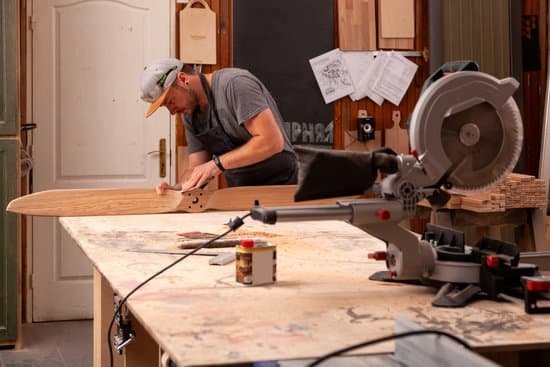Are you looking to improve the functionality of your woodworking bench? One essential tool to consider is a side vise, which can greatly enhance the versatility and efficiency of your woodworking projects. In this article, we will guide you through the process of installing a side vise on your woodworking bench, providing step-by-step instructions and valuable tips for selecting the right vise and ensuring its proper installation.
The installation of a side vise on a woodworking bench is crucial for clamping workpieces securely in place, allowing for greater precision and stability during various woodworking tasks. Whether you are working on cutting, sanding, chiseling, or carving projects, a side vise provides the necessary support and grip to tackle these tasks with ease. With the right guidance and tools, you can easily install a side vise to transform your woodworking bench into a more functional workspace.
In the following sections, we will outline the tools and materials needed for the installation process, provide tips on choosing the right side vise for your specific needs, offer step-by-step instructions on preparing the bench and installing the vise, as well as guidance on testing and maintaining the newly installed side vise. By following these instructions, you can upgrade your woodworking bench with a side vise that will enhance your woodworking experience and capabilities.
So let’s get started with understanding why a side vise is essential for every woodworker and how to install it effectively.
Tools and Materials Needed
When it comes to installing a side vise on a woodworking bench, having the right tools and materials is essential for a smooth and successful installation process. Here’s a comprehensive list of everything you’ll need to get the job done:
1. Side Vise: The most important item on your list is, of course, the side vise itself. Make sure to select a high-quality vise that is suitable for your specific woodworking projects and bench size.
2. Drill: A power drill will be necessary for drilling the pilot holes in the bench for securing the side vise in place.
3. Screws: You’ll need screws to attach the side vise to your woodworking bench securely.
4. Clamps: Clamps will come in handy during the installation process for holding the vise in place while you secure it with screws.
5. Measuring Tape: Accurate measurements are crucial when installing a side vise, so be sure to have a measuring tape on hand.
6. Pencil or Marker: Use these tools for marking where you will be drilling pilot holes and attaching the side vise.
7. Screwdriver or Wrench: Depending on the type of screws used, you may need a screwdriver or wrench for tightening them.
8. Safety Gear: Always prioritize safety by wearing protective gear such as gloves and safety glasses during installation to prevent any potential accidents or injuries.
By ensuring you have all these tools and materials at your disposal before starting the installation process, you can avoid unnecessary delays and complete this project smoothly and efficiently. Now that you have everything ready, let’s move on to choosing the right side vise for your woodworking bench and making sure it fits your needs perfectly.
Choosing the Right Side Vise
When it comes to choosing the right side vise for your woodworking bench, there are several factors to consider. The size, material, and functionality of the vise all play a crucial role in determining its suitability for your specific needs.
Size
The size of the side vise is an important consideration when choosing the right one for your woodworking bench. It should be proportionate to the size of your workbench and provide enough clamping capacity to accommodate the projects you typically work on. Consider the maximum jaw opening and throat depth to ensure that it can handle a variety of workpieces.
Material
Side vises are available in a range of materials, including cast iron, steel, and aluminum. Each material has its own advantages and limitations. Cast iron vises are durable and provide excellent clamping force, while steel vises are lighter and more affordable. Consider the type of projects you will be working on and choose a vise made from a material that aligns with your needs.
Functionality
The functionality of the side vise is another important factor to consider. Look for features such as quick-release mechanisms, adjustable jaws, and smooth operating systems that enhance its usability. Consider whether you need a swivel base or dog holes for additional support when working on different types of projects.
By carefully considering these factors, you can select the most appropriate side vise for your woodworking bench that will meet your specific requirements and enhance the efficiency of your woodworking projects. Regardless of which option you choose, understanding how to install a side vise on a woodworking bench will ensure it provides added functionality and ease in completing various tasks within your shop setup.
Preparing the Bench
Before you start the installation process, it is crucial to prepare your woodworking bench properly. This will ensure that the side vise is installed securely and functions effectively for all your woodworking projects. The following step-by-step instructions will guide you through the process of preparing your bench for the installation of the side vise.
The first step in preparing your woodworking bench for a side vise installation is to measure and mark the placement of the vise. Carefully determine where you want to position the vise on your bench, taking into consideration factors such as working height, accessibility, and available space. Once you have decided on the location, use a pencil and tape measure to mark where the vise will be mounted.
After marking the placement of the side vise, it is essential to ensure that the area is flat and level before proceeding with installation. Use a level to check if there are any uneven surfaces or discrepancies that could affect the mounting of the vise. If necessary, use shims or sand down any protruding areas to create a smooth and even surface for attaching the vise securely.
Lastly, consider reinforcing or adding additional support to areas of your bench where stress or pressure will be exerted once the side vise is installed. This may involve adding blocking underneath where screws or bolts will penetrate through, ensuring that they have enough material to bite into securely.
By following these preparatory steps, you can ensure that your woodworking bench is ready for a successful installation of a side vise. Taking these measures will not only result in a secure attachment but also contribute to smoother and more efficient operation when using your side vise for various woodworking projects.
| Tools Needed | Materials Needed |
|---|---|
| Tape measure | Side vise mount |
| Pencil | Shims (if needed) |
| Level |
Installing the Side Vise
Now that you have prepared your woodworking bench and have chosen the right side vise for your specific needs, it’s time to move on to the installation process. The following step-by-step guide will help you effectively install a side vise on your woodworking bench and ensure its secure placement for various woodworking projects.
- Begin by positioning the side vise in the desired location on your woodworking bench. Use a tape measure to ensure that it is centered and evenly spaced from both edges of the bench. Once you are satisfied with the placement, use a pencil to mark the locations of both mounting holes for the vise.
- Using an appropriate size drill bit, create pilot holes at each marked location on the bench. Pilot holes are essential as they allow for easier insertion of screws and reduce the risk of splitting or cracking the wood when attaching the vise.
- With the pilot holes drilled, place the side vise back in position over the drilled holes. Secure it in place using clamps to prevent any movement during installation.
- Using suitable screws, attach the side vise to your woodworking bench by driving them through each pilot hole. Make sure that you drive them in firmly without over-tightening which could potentially strip or damage them.
- Once all screws are in place, remove the clamps and test out your new side vise by opening and closing it several times to ensure smooth operation.
- Lastly, make any necessary adjustments to ensure that your newly installed side vise is secure and aligned properly with your woodworking bench before moving on to testing its functionality with actual woodworking tasks.
Remember, proper installation of a side vise can greatly enhance your experience with various woodworking projects by providing added stability and support when working with larger materials. Always refer back to manufacturer instructions for specific details related to installing their particular product.
Testing and Adjusting
Once the side vise has been successfully installed on your woodworking bench, it’s important to ensure that it is functioning as intended. Testing and adjusting the vise will help guarantee its smooth operation and make any necessary modifications for optimal functionality.
Testing the Side Vise
Begin by testing the side vise to ensure that it opens and closes smoothly without any hitches or resistance. Place a piece of scrap wood between the vise jaws and tighten the vise to hold the wood securely in place. Check for any slippage or movement in the wood while tightening the vise, as this may indicate a need for adjustment.
Making Necessary Adjustments
If you encounter any issues during testing, such as slippage or uneven clamping pressure, you may need to make some adjustments to the side vise. Start by checking if all screws and bolts are properly tightened, as loose hardware can affect the vise’s performance. Additionally, inspect the alignment of the vise jaws to ensure they are parallel and making even contact with the workpiece.
Ensuring Smooth and Efficient Operation
Once any necessary adjustments have been made, re-test the side vise to ensure that it now operates smoothly and efficiently. Pay attention to how easily you can maneuver the handle of the vise when tightening or releasing it. The goal is to achieve a secure grip on your workpiece without exerting unnecessary force on the handle.
Regularly testing and adjusting your newly installed side vise will help maintain its proper function over time, ensuring that it remains an essential tool in your woodworking projects. Taking these steps will enhance your overall woodworking experience and contribute to successful project outcomes.
Maintenance and Care
Once you have successfully installed a side vise on your woodworking bench, it is crucial to prioritize its maintenance and care to ensure its longevity and optimal performance. Regular maintenance will not only extend the lifespan of the vise but also contribute to safe and efficient woodworking projects. Here are some essential tips on how to properly maintain and care for your side vise:
1. Lubrication: Regularly lubricating the moving parts of the side vise is essential for smooth operation. Use a high-quality lubricant such as machine oil or silicone spray to keep the screw threads, guide bars, and other moving components well-lubricated. This will prevent friction, corrosion, and wear, ensuring that the vise functions seamlessly.
2. Cleaning: It is important to keep the side vise clean from sawdust, debris, and other contaminants that could affect its performance. Use a brush or compressed air to remove any buildup of dirt and dust from the vise’s surfaces and moving parts. Additionally, wiping down the vise with a clean cloth after each use can help maintain its appearance and functionality.
3. Inspection: Regularly inspecting the side vise for any signs of damage, wear, or misalignment is crucial for its long-term performance. Check for loose screws or bolts, cracked or worn-out components, and any irregularities in the operation of the vise. Addressing these issues promptly will prevent further damage and ensure that the vise continues to function effectively.
By following these maintenance tips, you can ensure that your newly installed side vise remains in excellent condition, providing reliable support for your woodworking projects.
| Maintenance Tip | Details |
|---|---|
| Lubrication | Regularly lubricate moving parts with machine oil or silicone spray. |
| Cleaning | Keep the vise clean from sawdust and debris using a brush or compressed air. |
| Inspection | Regularly inspect for signs of damage or wear. |
Conclusion
In conclusion, the installation of a side vise on a woodworking bench is a crucial step in enhancing the functionality and versatility of the workspace. By securing workpieces firmly in place, a side vise provides woodworkers with the stability and support necessary for various projects, such as planing, sawing, drilling, and sanding. Additionally, it allows for precise and accurate woodworking by preventing unnecessary movement or slippage of the workpiece during these tasks.
Furthermore, the process of installing a side vise may seem daunting at first, but with the right tools, materials, and guidance, it can be accomplished successfully. Choosing the appropriate side vise for your specific needs is essential, as it ensures that the vise fits securely onto your woodworking bench and offers the required functionalities. Preparing the bench properly by measuring and marking the placement of the vise is also crucial to guarantee a seamless installation process.
In essence, incorporating a side vise into your woodworking bench setup not only improves overall efficiency but also adds value to your woodworking experience. With proper maintenance and care, your newly installed side vise will continue to serve you well for years to come. So don’t hesitate to follow these instructions on how to install a side vise on a woodworking bench and take your woodworking projects to new heights.

Hi everyone! I’m a woodworker and blogger, and this is my woodworking blog. In my blog, I share tips and tricks for woodworkers of all skill levels, as well as project ideas that you can try yourself.





